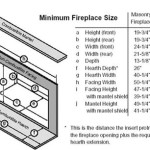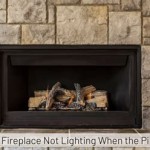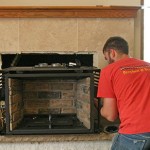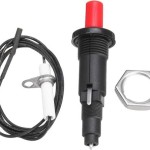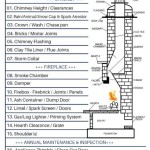Zero Clearance Fireplace Inserts: A Comprehensive Overview
Zero clearance fireplace inserts represent a significant evolution in home heating, offering a blend of aesthetics, efficiency, and safety. Unlike traditional fireplaces that require extensive masonry work and substantial clearances from combustible materials, zero clearance (ZC) inserts are designed to be installed within framed enclosures with minimal spacing. This characteristic makes them a versatile option for both new construction and renovation projects, allowing homeowners to enjoy the ambiance of a fireplace without the complexities and limitations of traditional installations.
The term "zero clearance" can be slightly misleading. While these inserts can be placed very close to combustible materials, they still require a specified minimum clearance, as outlined by the manufacturer and confirmed through rigorous testing. This testing, typically conducted by independent laboratories such as UL (Underwriters Laboratories) or CSA (Canadian Standards Association), ensures that the insert can operate safely within the designated enclosure without posing a fire hazard. These certifications are crucial for ensuring compliance with building codes and providing peace of mind to homeowners.
ZC fireplace inserts are available in a range of fuel types, including wood, gas (natural gas and propane), and electric. Each fuel type offers distinct advantages and disadvantages in terms of heating efficiency, cost, environmental impact, and aesthetic appeal. The selection of the appropriate fuel type will depend on individual preferences, budgetary constraints, and local regulations.
Understanding the Construction and Operation of Zero Clearance Fireplace Inserts
ZC fireplace inserts are engineered with a double-wall construction, which is a key feature that facilitates their safe operation. The outer wall remains relatively cool to the touch, even when the firebox is operating at high temperatures. This is achieved through a layer of insulation and an air gap between the inner firebox and the outer wall. This construction minimizes heat transfer to surrounding combustible materials, allowing for closer proximity and simplified installation.
The firebox itself is typically constructed of heavy-gauge steel or cast iron, designed to withstand the high temperatures generated during combustion. The interior may be lined with refractory materials, such as firebrick or ceramic panels, which further enhance heat retention and improve combustion efficiency. These refractory materials also protect the steel or cast iron from the direct impact of flames and extreme temperatures, extending the lifespan of the insert.
Ventilation is a critical aspect of ZC fireplace insert operation. Depending on the fuel type, the insert will require a specific venting system to safely exhaust combustion byproducts, such as smoke, carbon monoxide, and other gases. Wood-burning inserts often utilize a Class A chimney, which is specifically designed for high-temperature applications. Gas inserts typically use a direct vent system, which draws combustion air from outside the home and exhausts flue gases directly outdoors, minimizing the risk of backdrafting and indoor air pollution. Electric inserts, by contrast, do not require venting, as they do not produce any combustion byproducts.
Most ZC fireplace inserts are equipped with a glass door, which allows for viewing the flames while providing a barrier against sparks and embers. This glass door is typically made of high-temperature ceramic glass, capable of withstanding the extreme heat generated within the firebox. The door may also incorporate an air wash system, which directs a stream of air across the glass surface to help keep it clean and clear of soot and creosote buildup.
Key Advantages of Using Zero Clearance Fireplace Inserts
One of the primary advantages of ZC fireplace inserts is their ease of installation. Because they do not require extensive masonry work, they can often be installed in a single day, minimizing disruption to the home. This makes them an attractive option for homeowners who want to add a fireplace without the expense and inconvenience of building a traditional masonry fireplace.
ZC fireplace inserts are also significantly more energy-efficient than traditional open fireplaces. Open fireplaces typically lose a significant amount of heat up the chimney, resulting in net heating efficiencies as low as 10%. ZC inserts, on the other hand, are designed to retain heat and radiate it into the room. Wood-burning inserts typically have efficiencies of 60-80%, while gas inserts can achieve efficiencies of 70-85% or higher. This improved efficiency translates into lower heating costs and reduced energy consumption.
Safety is another key advantage of ZC fireplace inserts. The enclosed firebox and controlled venting system minimize the risk of sparks, embers, and flue gases escaping into the home. The double-wall construction also reduces the risk of burns from contact with the exterior surfaces of the insert. Furthermore, many inserts are equipped with safety features such as automatic shut-off valves and carbon monoxide detectors, which provide an additional layer of protection.
ZC fireplace inserts offer a wide range of aesthetic options, allowing homeowners to customize the look and feel of their fireplace. They are available in a variety of styles, from traditional to contemporary, and can be finished with a range of materials, such as stone, brick, and tile. Some models also offer customizable features such as log sets, flame patterns, and accent lighting, allowing homeowners to create a truly unique focal point in their home.
Factors to Consider When Selecting a Zero Clearance Fireplace Insert
Before selecting a ZC fireplace insert, it is essential to consider the size of the space to be heated. Inserts are rated in terms of their heating capacity, typically expressed in British Thermal Units (BTUs). Choosing an insert that is too small will result in inadequate heating, while choosing an insert that is too large can lead to uncomfortable overheating. A professional fireplace retailer or installer can help determine the appropriate BTU rating for a given space.
The fuel type is another important consideration. Wood-burning inserts offer the ambiance of a real wood fire and can be a cost-effective heating option in areas where wood is readily available. However, they require more maintenance than gas or electric inserts, including wood storage, ash removal, and chimney cleaning. Gas inserts offer the convenience of push-button operation and require minimal maintenance, but they are dependent on a reliable supply of natural gas or propane. Electric inserts are the easiest to install and operate, but they typically provide less heat than wood or gas inserts and may be more expensive to operate in areas with high electricity rates.
The venting requirements of the insert must also be considered. Wood-burning inserts typically require a Class A chimney, which can be expensive to install if one is not already present. Gas inserts may require a direct vent system, which must be properly sized and installed to ensure safe and efficient venting. Electric inserts do not require venting, making them a simpler and more affordable option in some cases.
Finally, it is important to consider the cost of the insert and installation. ZC fireplace inserts can range in price from a few hundred dollars to several thousand dollars, depending on the fuel type, size, features, and brand. Installation costs can also vary widely, depending on the complexity of the installation and the need for additional venting or electrical work. Obtaining quotes from multiple installers is recommended to ensure a competitive price.
The selection and installation of a zero clearance fireplace insert is a complex process involving several factors. Proper research, planning, and professional consultation are essential to ensure that the chosen insert is appropriate for the specific needs and circumstances of the homeowner. Adhering to manufacturer's specifications and local building codes is paramount for a safe and efficient installation.

Fireplace Insert Vs Zero Clearance Maple Mtn

Epa Certified Zero Clearance Wood Burning Fireplaces

Is A New Zero Clearance Fireplace Right For You Design Styles Sizes

Rsf Pearl Woodburning Zero Clearance Fireplace Fergus

Hearthstone Wfp 75 Montgomery 8411 Zero Clearance Wood Burning Fireplace Mazzeo S Stoves Fireplaces

Ambiance Elegance 36 Louvered Zero Clearance Wood Fireplace Energy Savers

Zero Clearance Wood Gas Fireplaces Richmond Va Prefab

Top 9 Benefits Of Installing A Zero Clearance Fireplace We Love Fire

Zero Clearance Fireplaces Gas Wood

Zero Clearance Vs Prefabricated Fireplace Full Service Chimney
Related Posts

